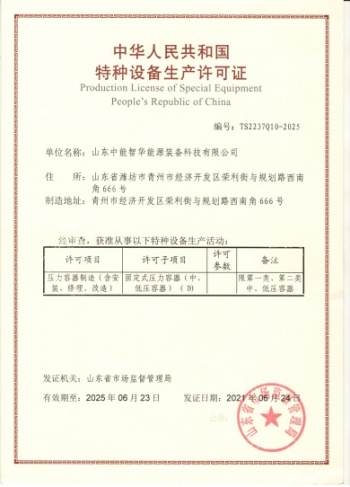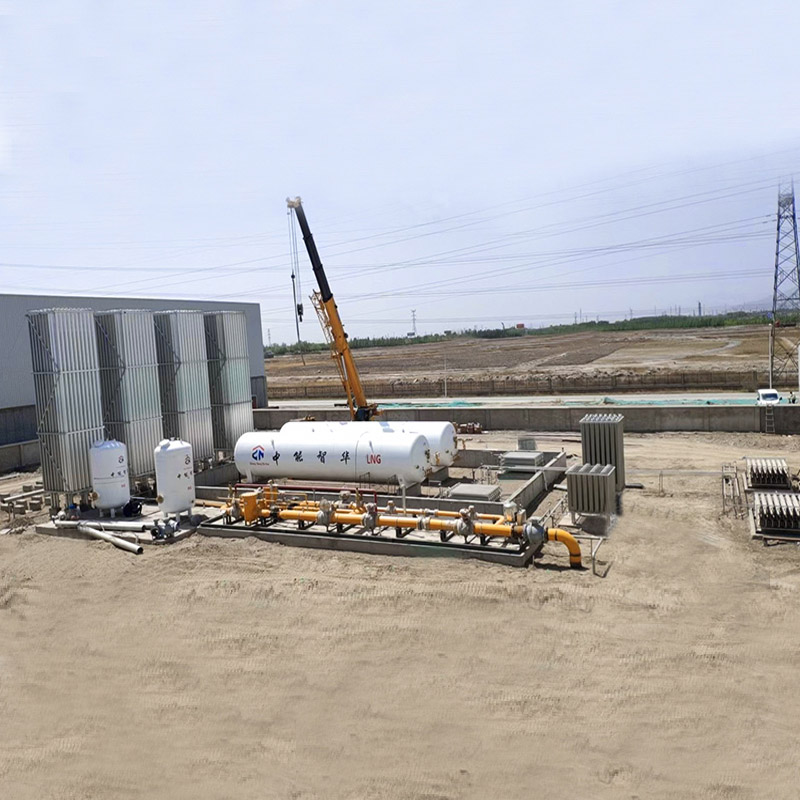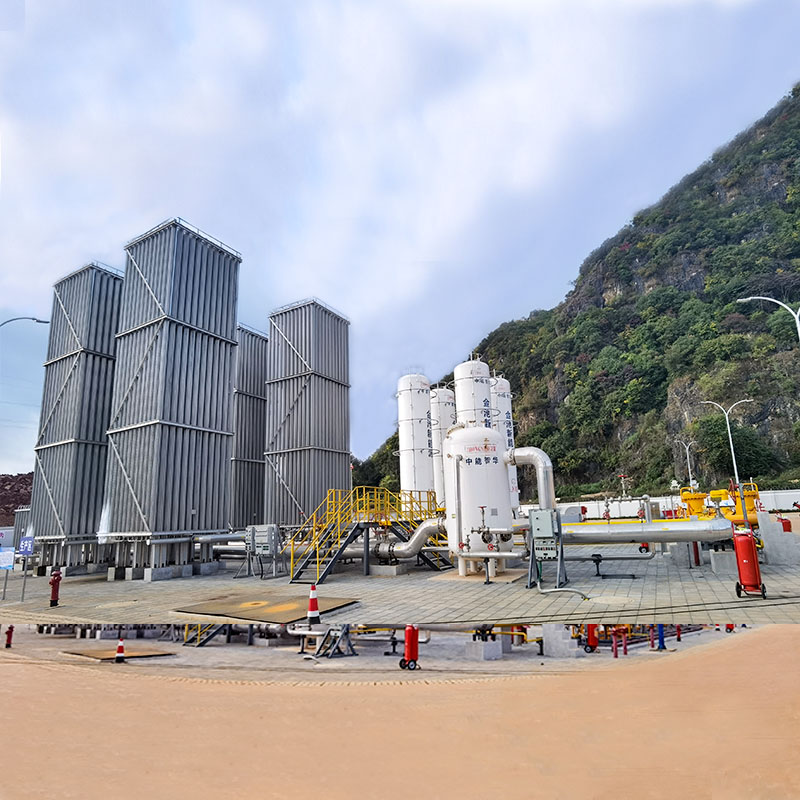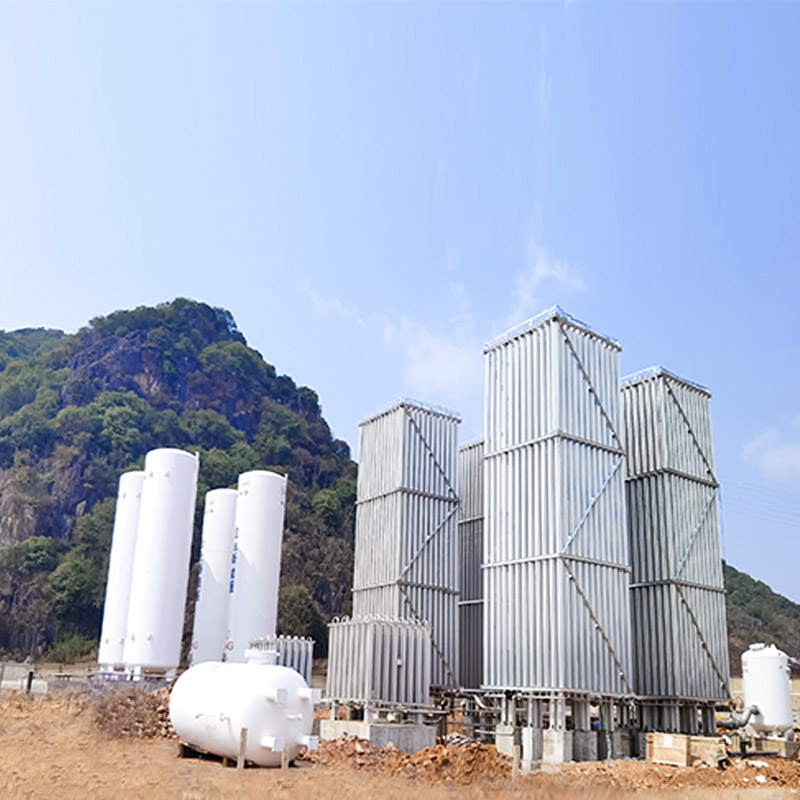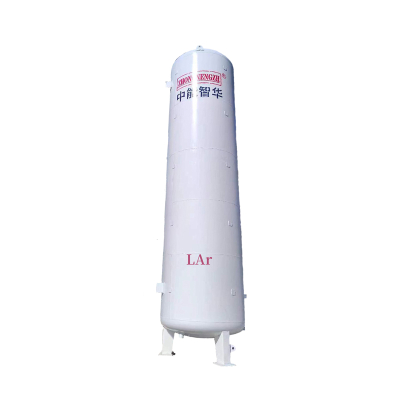60m3 LNG Cryogenic Storage Tank for LNG Station
1.Compact structure, cover a small area.
2.Complete closed system, The liquid or gas can be supplied externally without any additional energy, ensure the liquid or gas purity when discharge.
3.With the pressure adjusting device, pressure is stable, easy to operate.
4.Tank provided with a tank filled joints, can shipping liquid to the vaporizers, tanks.
5.Insulation material vacuum layer, to make sure the long use life.
Designing an LNG pressure vessel involves consideration of several factors to ensure safe and efficient storage and transportation of liquefied natural gas. Here are some key aspects to consider when designing an LNG pressure vessel:
Material Selection: Selecting the appropriate materials with high strength and resistance to the low temperatures of LNG is crucial. Common materials used for LNG pressure vessels include stainless steel, nickel alloys, and aluminum alloys.
Insulation: Proper insulation is essential to maintain the low temperature of LNG and prevent heat ingress. Insulation materials such as perlite, foam glass, or vacuum insulation panels are commonly used.
Pressure Ratings: LNG pressure vessels must be designed to withstand the internal pressure of the liquefied gas. The pressure rating of the vessel should be determined based on operating conditions and safety regulations.
Structural Integrity: The vessel should be designed to ensure structural integrity under various loading conditions, including pressure, thermal expansion, and transportation stresses.
Safety Features: Incorporate safety features such as pressure relief valves, emergency shutdown systems, and leak detection systems to prevent accidents and ensure the safe operation of the LNG pressure vessel.
Regulatory Compliance: Compliance with relevant codes and standards, such as ASME Boiler and Pressure Vessel Code, API 620, and EN 13445, is necessary to ensure that the LNG pressure vessel meets safety and quality requirements.
Size and Configuration: The size and configuration of the LNG pressure vessel should be optimized to meet specific storage or transportation requirements while considering factors such as space limitations and transportation constraints.
Testing and Inspection: Conduct thorough testing, including hydrostatic testing, non-destructive testing, and inspections, to ensure the quality and integrity of the LNG pressure vessel before putting it into service.
By considering these factors and working with experienced engineers and manufacturers specializing in LNG pressure vessels, you can ensure the design and fabrication of a safe and efficient LNG pressure vessel for your specific application.
Applicable Industries
Hotels, Manufacturing Plant, Food & Beverage Factory, Farms, Restaurant, Construction works, Energy & Mining, medical, chemical industry
Produce Process


Main Parameter
| Item | Model | Dimension | Weight | Type |
| 1 | CFL-50/0.8 | Φ3216*10721 | 19554 | Vertical |
| 2 | CFL-60/0.8 | Φ3020*14162 | 26169 | Vertical |
| 3 | CFL-60/1.2 | Φ3020*14162 | 28350 | Horizontal |
Certificate

